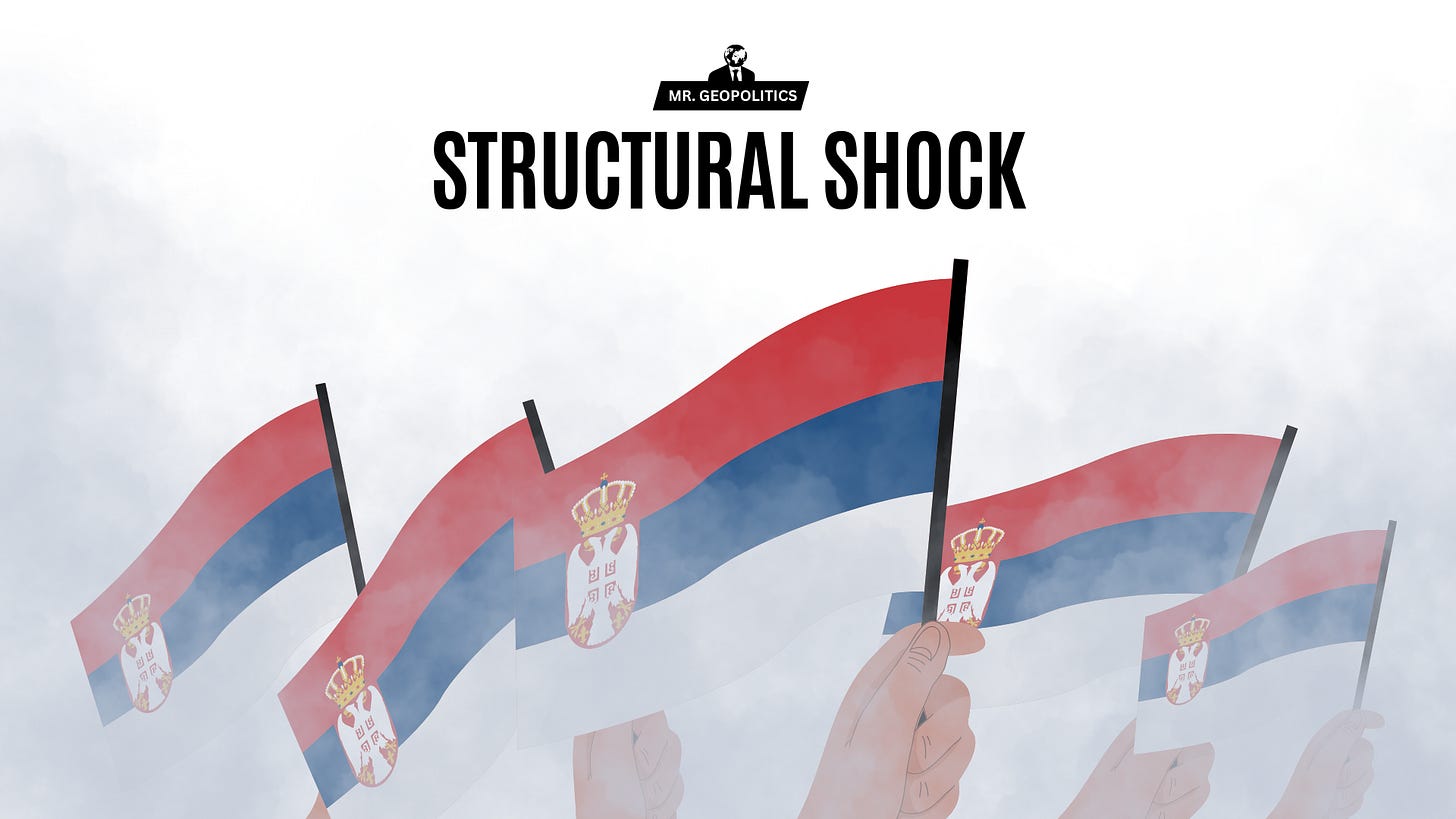🇷🇸📢 Why Serbia's Roof Collapse Should Shake The World
A geopolitical domino effect that many have missed
A roof collapse has plunged Serbia into new political and social instability.
On November 1, 2024, the roof collapsed at a train station in Novi Sad, Serbia's second-largest city after Belgrade, the capital. People sitting below were struck, resulting in 15 people dying and a further seven people being injured.
Anger flared in Serbian society directed at the government, prompting huge protests, mainly led by students, to begin. Three days after the roof collapse, the Serbian transport minister, Goran Vesic, resigned. However, the protests did not disappear; they snowballed, at times paralyzing Serbian cities. At the beginning of January, 13 Serbian officials, including Vesic, were charged. On January 28, the Serbian prime minister, Milos Vucevic, who only assumed office in May 2024, announced he was leaving office.
All of this has done little to alleviate the pressure.
On February 1, tens of thousands of protestors took to the streets, including blocking bridges in Novi Sad, to mark three months since the roof collapse and demanding more government action, including sharing documents about the Novi Sad train station.
Because, Novi Sad was recently renovated. Here is the kicker: the renovation was part of a Chinese-led BRI project to build a high-speed railway connecting Belgrade and Budapest. The renovations were relatively new, as parts of the construction ended in mid-2023.
Keep reading with a 7-day free trial
Subscribe to Mr. Geopolitics to keep reading this post and get 7 days of free access to the full post archives.






